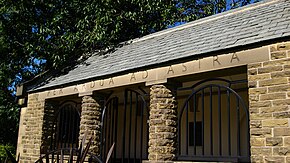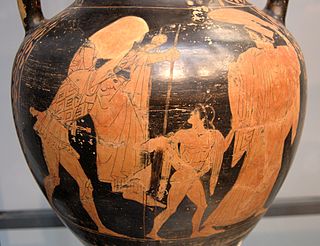
Ascanius was a legendary king of Alba Longa and is the son of the Trojan hero Aeneas and Creusa, daughter of Priam. He is a character in Roman mythology, and has a divine lineage, being the son of Aeneas, who is the son of the goddess Venus and the hero Anchises, a relative of the king Priam; thus Ascanius has divine ascendents by both parents, being descendants of god Jupiter and Dardanus. He is also an ancestor of Romulus, Remus and the Gens Julia. Together with his father, he is a major character in Virgil's Aeneid, and he is depicted as one of the founders of the Roman race.
Per aspera ad astra is a Latin phrase meaning "through hardships to the stars" and is the motto of many organizations.
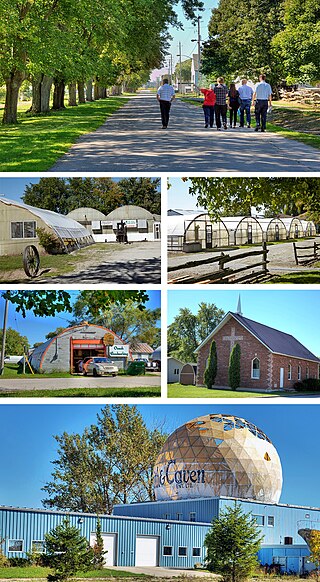
Vanastra is a dispersed rural community and unincorporated place in the municipality of Huron East, Huron County in southwestern Ontario, Canada, 3 kilometres (1.9 mi) southeast of the community of Clinton. It is located on the former property of a top secret Royal Canadian Air Force (RCAF) station used to train and supply over 7,000 radar technicians and support staff for American, British and Canadian forces during World War II.
Ad astra is a Latin phrase meaning "to the stars". The phrase has origins with Virgil, who wrote in his Aeneid: "sic itur ad astra" and "opta ardua pennis astra sequi". Another origin is Seneca the Younger, who wrote in Hercules: "non est ad astra mollis e terris via".

The Royal Australian Air Force Memorial is on Anzac Parade, the principal ceremonial and memorial avenue of Canberra, the capital city of Australia.

The Way to the Stars is a 1945 Anglo-American black-and-white Second World War drama film made by Two Cities Films. The film was produced by Anatole de Grunwald, directed by Anthony Asquith, and stars Michael Redgrave, John Mills, Rosamund John, and Stanley Holloway. In the United States it was shortened by 22 minutes, and the shortened version was distributed by United Artists under the title Johnny in the Clouds.

Air Vice Marshal Sir Frederick Hugh Sykes, was a British military officer and politician.

The "Royal Air Force March Past" is the official march of the Royal Air Force (RAF) and is used in some other Commonwealth air forces.
Ad astra (phrase) is a Latin phrase meaning "to the stars", and the motto of several organizations

Challenger Point is a high mountain summit of the Crestones in the Sangre de Cristo Range of the Rocky Mountains of North America. The 14,087-foot (4,294 m) fourteener is located 5.0 miles (8.1 km) east by south of the Town of Crestone in Saguache County, Colorado, United States. The summit is on the northwest shoulder of Kit Carson Mountain, and is a subpeak of the latter. It was renamed in memory of the seven astronauts who died when the Space Shuttle Challenger disintegrated shortly after liftoff on January 28, 1986.
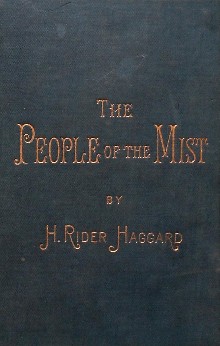
The People of the Mist is a classic lost race fantasy novel written by H. Rider Haggard. It was first published serially in the weekly magazine Tit-Bits, between December 1893 and August 1894; the first edition in book form was published in London by Longman in October, 1894. It was reprinted in December, 1973 by Ballantine Books as the sixty-third paperback volume of the Ballantine Adult Fantasy series.

Order of the Three Stars is the highest civilian order awarded for meritorious service to Latvia. It was established in 1924 in remembrance of the founding of Latvia. Its motto is "Per aspera ad astra", meaning "Through hardships to the stars". The Order has five ranks and three grades of medals of honour.

Per Aspera Ad Astra is the fourth studio LP by Stars of the Lid, made in collaboration with artist Jon McCafferty and released on Kranky in 1998. McCafferty approached Stars of the Lid with a view towards collaboration after working on a series of paintings inspired by the duo's 1995 debut Music for Nitrous Oxide. The title is a common Latin phrase translatable as "through hardships, to the stars."
Thornhill High School opened on the air force base in Gwelo, Rhodesia in January 1955. In January 1958, the school moved to its present site in Gweru.

The Royal Air Force Memorial is a military memorial on the Victoria Embankment in central London, dedicated to the memory of the casualties of the Royal Air Force in World War I. Unveiled in 1923, it became a Grade II listed structure in 1958, and was upgraded to Grade II* in 2018. It is considered to be the official memorial of the RAF and related services.

The badge of the Royal Air Force is the heraldic emblem used to represent the Royal Air Force (RAF). It features an eagle superimposed on a circlet, which is surmounted by a crown.
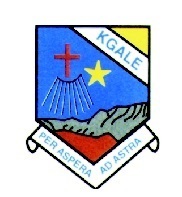
St. Joseph's College is a government-aided Catholic school located in Gaborone, Botswana.

A statue of Captain Albert Ball stands in Nottingham Castle Gardens, in Nottingham, England. It comprises a bronze sculpture by Henry Poole which depicts the British fighter pilot Captain Albert Ball VC DSO & Two Bars, MC accompanied by an allegorical female figure, standing on a stone pedestal by the architect Edwin Alfred Rickards. The memorial was unveiled in 1921, was listed at Grade II in 1972, upgraded to Grade I in 2017.
